Background
Sheila Blair was born on November 26, 1948 in Montreal, Quebec, Canada. She later became a naturalized United States citizen.
In 1969 Sheila Blair acquired General Certificate in Sociology and Political Science at the London School of Economics.
A year later in 1970 she graduated as a B. A. cum laude in Sociology and Art History from Tufts University.
Blair became a Ph.D. in Fine Arts and Middle Eastern Studies in 1980 having conducted her research at Harvard University.
Sheila Blair together with her husband Jonathan M. Bloom.





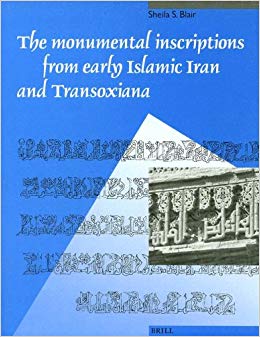
(This book studies the surviving 79 monumental inscription...)
This book studies the surviving 79 monumental inscriptions from the Iranian world that date to the first five centuries of the Muslim era (ad 622-1106). Each is presented with photographs, drawings, transcriptions, translations and an extensive commentary, which explains the text in its larger historical and artistic context.
http://www.amazon.com/gp/product/9004093672/?tag=2022091-20
1991
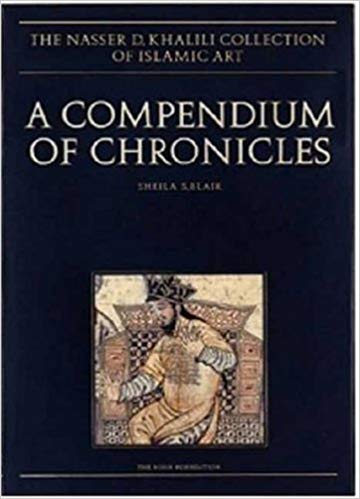
(The Khalili Collection owns what is, without doubt, one o...)
The Khalili Collection owns what is, without doubt, one of the most important illustrated medieval manuscripts from either East or West. The Jami' al-Tawarikh or 'Compendium of Chronicles' was written by the 14th-century court historian Rashid al-Din, under the patronage of the Ilkhanids. The 59 folios in the Khalili Collection - reproduced here in colour for the first time after their recent restoration - together with those in the Edinburgh University Library, form a fragment of the earliest surviving Arabic copy of the work. An appendix in this volume reintegrates these folios and reconstructs their original order. The author discusses the identity and techniques of the calligraphers and painters involved, analyses the sources for the illustrations, and reveals the importance of this manuscript in the history of the Persian book. She also traces the manuscript's journey from Rashid al-Din's scriptorium in Tabriz through Timurid Herat, the 19th-century Mughal court and the East India Company, to its acquisition by the Royal Asiatic Society. The volume also includes a translation by W.M. Thackston of the articles of the endowment of the Rab'-i Rashidi.
http://www.amazon.com/gp/product/187478065X/?tag=2022091-20
1995
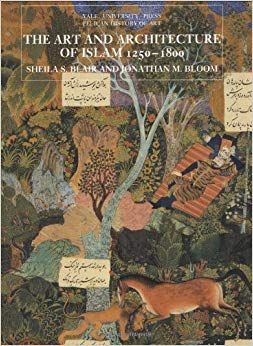
(Virtually all the masterpieces of Islamic art - the Alham...)
Virtually all the masterpieces of Islamic art - the Alhambra, the Taj Mahal, and the Tahmasp Shahnama - were produced during the period from the Mongol conquests in the early thirteenth century to the advent of European colonial rule in the nineteenth. This beautiful book surveys the architecture and arts of the traditional Islamic lands during this era. Conceived as a sequel to The Art and Architecture of Islam: 650-1250, by Richard Ettinghausen and Oleg Grabar, the book follows the general format of the first volume, with chronological and regional divisions and architecture treated separately from the other arts.
http://www.amazon.com/gp/product/0300064659/?tag=2022091-20
1996

(The first object created by God, according to early Musli...)
The first object created by God, according to early Muslim commentators, was the pen, which he used to chronicle events to come. The word, in its various manifestations, is central to the Islamic faith. Surely a reflection of this centrality, profuse inscriptions mark countless Islamic objects, from the humblest oil lamps and unglazed ceramics to the finest and most expensive rock crystals and jades. The inscriptions serve numerous functions: decorating, proclaiming ownership and patronage, proffering good wishes and proverbs, and spreading religious texts throughout the world. Aside from their aesthetic worth, these inscriptions provide a fascinating window onto a distant culture. In Islamic Inscriptions, Sheila S. Blair a wealth of stunning images and incisive commentary, while also providing the newcomer to Islamic civilization with a key to unlocking the mysteries of Islamic epigraphy. In addition to chapters devoted to the main types of inscription, detailing the development of their content and style, inscriptive techniques, and the motivations behind them, the book provides practical knowledge on finding, identifying, interpreting, researching, and recording inscriptions. The variety and clarity of information presented makes Islamic Inscriptions an ideal reference for historians, curators, archaeologists, and collectors.
http://www.amazon.com/gp/product/0814713289/?tag=2022091-20
1998
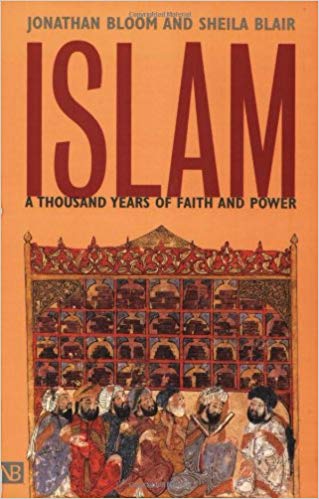
(In its first thousand years - from the revelations to Muh...)
In its first thousand years - from the revelations to Muhammad in the seventh century to the great Islamic empires of the sixteenth - Islamic civilization flourished. While Europeans suffered through the Dark Ages, Muslims in such cities as Jerusalem, Damascus, Alexandria, Fez, Tunis, Cairo, and Baghdad made remarkable advances in philosophy, science, medicine, literature, and art. This engrossing and accessible book explores the first millennium of Islamic culture, shattering stereotypes and enlightening readers about the events and achievements that have shaped contemporary Islamic civilization.
http://www.amazon.com/gp/product/0300094221/?tag=2022091-20
2002

(With a history spanning some fourteen centuries, Islamic ...)
With a history spanning some fourteen centuries, Islamic art is one of the world’s great artistic traditions, although it largely eschews such familiar art forms as painting on canvas and monumental sculpture. Cosmophilia is the catalog of an exhibition of 123 examples of the finest examples of Islamic art from the C. L. David Collection in Copenhagen, Denmark shown in 2006 at the McMullen Museum at Boston College and soon to travel to the Smart Museum at the University of Chicago. These beguiling works from Spain, West Africa, China, and Indonesia include ornamental textiles, calligraphy, book-painting, ceramics, and inlaid wood. An introductory essay by cocurators Sheila S. Blair and Jonathan M. Bloom that explores the nature and meaning of ornament in Islamic art accompanies this lavishly illustrated catalog.
http://www.amazon.com/gp/product/1892850117/?tag=2022091-20
2006
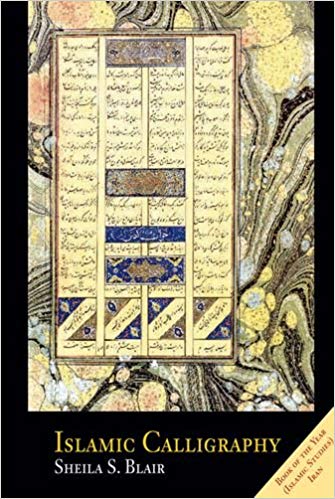
(The extensive use of writing is a hallmark of Islamic civ...)
The extensive use of writing is a hallmark of Islamic civilization. Calligraphy became one of the main methods of artistic expression from the seventh century to the present in almost all regions from the far Maghrib to India and beyond. Arabic script was adopted for other languages from Persian and Turkish to Kanembu and Malay. Islamic Calligraphy explains this art form to modern readers and shows them how to identify, understand and appreciate its varied styles and modes. Designed to offer a standardized terminology for identifying and describing various styles of Islamic calligraphy, it aims to help Westerners appreciate why calligraphy has long been so important in Islamic civilization. This sumptuous, prize-winning book is an ideal reference for anyone with an interest in Islamic art.
http://www.amazon.com/gp/product/0748635408/?tag=2022091-20
2008
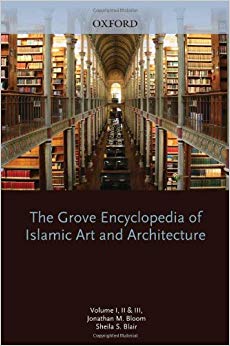
(The Grove Encyclopedia of Islamic Art and Architecture is...)
The Grove Encyclopedia of Islamic Art and Architecture is the most comprehensive reference work in this complex and diverse area of art history. Built on the acclaimed scholarship of the Grove Dictionary of Art, this work offers over 1,600 up-to-date entries on Islamic art and architecture ranging from the Middle East to Central and South Asia, Africa, and Europe and spans over a thousand years of history. Recent changes in Islamic art in areas such as Afghanistan, Iran, and Iraq are elucidated here by distinguished scholars. Entries provide in-depth art historical and cultural information about dynasties, art forms, artists, architecture, rulers, monuments, archaeological sites and stylistic developments. In addition, over 500 illustrations of sculpture, mosaic, painting, ceramics, architecture, metalwork and calligraphy illuminate the rich artistic tradition of the Islamic world. With the fundamental understanding that Islamic art is not limited to a particular region, or to a defined period of time, The Grove Encyclopedia of Islamic Art and Architecture offers pathways into Islamic culture through its art.
http://www.amazon.com/gp/product/019530991X/?tag=2022091-20
2009
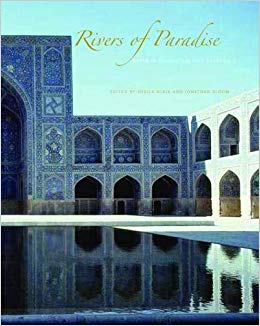
(For millennia the collection, distribution, and symbolism...)
For millennia the collection, distribution, and symbolism of water have played pivotal roles in the lands where Islam has flourished. This book is the first to address this important subject. A diverse spectrum of scholars covers a wide range of topics: from the revelation of Islam in the 7th century to today’s conservation and development issues, from watering oases in the Moroccan desert to the flooded plains of Bengal. Copiously illustrated with beautiful color photographs and newly drawn plans and maps, this book will provoke readers to appreciate and acknowledge the essential, if often invisible and transitory, roles that water played in the arts of the Islamic lands and beyond.
http://www.amazon.com/gp/product/0300158998/?tag=2022091-20
2009
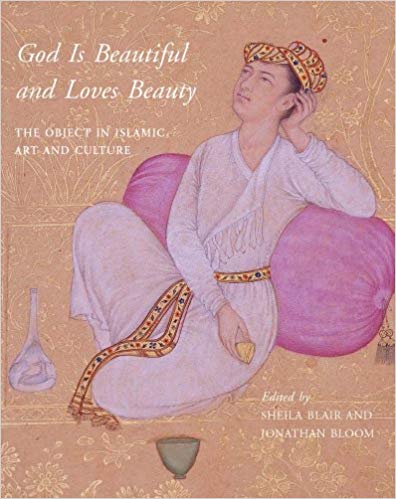
(The Islamic world, spanning centuries and far-flung regio...)
The Islamic world, spanning centuries and far-flung regions, is renowned for its diverse cultural and artistic traditions. This sumptuous book delves into that vast creative output, examining a dozen exquisite objects in the Museum of Islamic Art, in Doha, Qatar, designed by the Chinese-American architect I. M. Pei and opened in 2008. Twelve prominent scholars from across the globe select works representing various centers of Islamic life, from early Spain to 17th-century India, as well as a range of media including textiles, ceramics, metalwork, and miniature paintings. Authoritative texts put the objects into context, exploring the relationships to those people who produced and lived among them.
http://www.amazon.com/gp/product/0300196660/?tag=2022091-20
2013
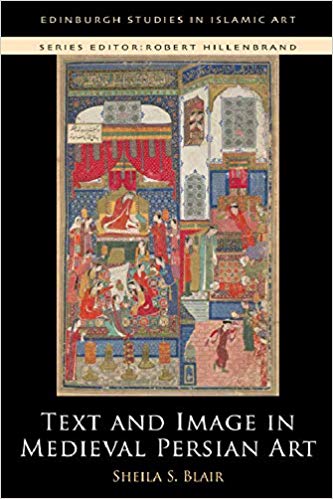
(Greater Iranian arts from the 10th to the 16th century ar...)
Greater Iranian arts from the 10th to the 16th century are technically some of the finest produced anywhere. They are also intellectually engaging, showing the lively interaction between the verbal and the visual arts. Focusing on objects found in the main media at the time, Sheila S. Blair shows how artisans played with form, material and decoration to engage their audiences. She also shows how the reception of these objects has changed and that their present context has implications for our understanding of the past.
http://www.amazon.com/gp/product/1474446329/?tag=2022091-20
2014
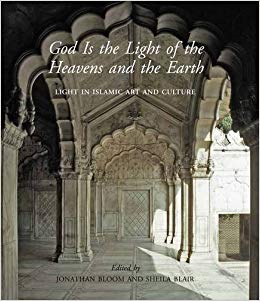
(The Qur’an makes rich references to light, tying it to re...)
The Qur’an makes rich references to light, tying it to revelation, and light consequently permeates the culture and visual arts of the Islamic lands. God Is the Light of the Heavens and the Earth explores the integral role of light in Islamic civilization across a wide range of media, from the Qur’an and literature to buildings, paintings, performances, photography, and other works produced over the past 14 centuries. A team of international experts conveys current scholarship on Islamic art in a manner that is engaging and accessible to the general reader. The objects discussed include some of the first identifiable works of Islamic art - modest oil lamps inscribed in Arabic, which developed into elaborately decorated metal and glass lamps and chandeliers. Later, photography, which creates images with light, was readily adopted in Islamic lands, and it continues to provide inspiration for contemporary artists. Generously illustrated with specially commissioned, sumptuous color photographs, this book shows the potential of light to reveal color, form, and meaning. The Qur’an makes rich references to light, tying it to revelation, and light consequently permeates the culture and visual arts of the Islamic lands. God Is the Light of the Heavens and the Earth explores the integral role of light in Islamic civilization across a wide range of media, from the Qur’an and literature to buildings, paintings, performances, photography, and other works produced over the past 14 centuries. A team of international experts conveys current scholarship on Islamic art in a manner that is engaging and accessible to the general reader. The objects discussed include some of the first identifiable works of Islamic art - modest oil lamps inscribed in Arabic, which developed into elaborately decorated metal and glass lamps and chandeliers. Later, photography, which creates images with light, was readily adopted in Islamic lands, and it continues to provide inspiration for contemporary artists. Generously illustrated with specially commissioned, sumptuous color photographs, this book shows the potential of light to reveal color, form, and meaning.
http://www.amazon.com/gp/product/0300215282/?tag=2022091-20
2015
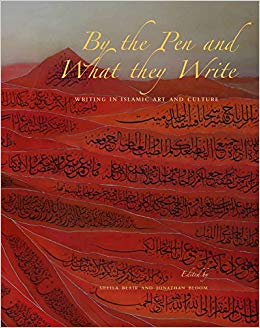
(Considered by Muslims as the only true art, calligraphy h...)
Considered by Muslims as the only true art, calligraphy has played a prominent role in Islamic culture since the time of the prophet Muhammad. Exploring this central role of the written word in Islam and how writing practices have evolved and adapted in different historical contexts, this book provides an overview of the enormous impact that writing in Arabic script has had on the visual arts of the Islamic world. Approaching the topic from a number of different perspectives, the essays in this volume include discussions on the relationship between orality and the written word; the materiality of the written word, ranging from the type of paper on which books were written to monumental inscriptions in stone and brick; and the development of Arabic typography and the printed book. Generously illustrated, By the Pen and What They Write is an engaging look at how writing has remained a foundational component of Islamic art throughout fourteen centuries.
http://www.amazon.com/gp/product/0300228244/?tag=2022091-20
2017
editor educator art historian writer
Sheila Blair was born on November 26, 1948 in Montreal, Quebec, Canada. She later became a naturalized United States citizen.
In 1969 Sheila Blair acquired General Certificate in Sociology and Political Science at the London School of Economics. A year later in 1970 she graduated as a B. A. cum laude in Sociology and Art History from Tufts University. Blair became a Ph.D. in Fine Arts and Middle Eastern Studies in 1980 having conducted her research at Harvard University. Except for English, she is also competent in French, Persian, Arabic and Russian.
In 1971 after graduation from Tufts University Sheila Blair took the position of Instructor at the Sociology Department at Pahlavi University, Shiraz, Iran but held this position only for a year. In 1980 she joined Harvard University and Massachusetts Institute of Technology as an Aga Khan Lecturer on Islamic Art and Architecture. The same year she marries Jonathan M. Bloom who would become a co-author of many of her works. The following year she lectures at the University of Pennsylvania. As a renowned specialist in Islamic Art Blair becomes a Visiting Professor at a number of universities in the world and since 1985 up to 2005 moves around Europe and the United States. In 2000 Blair accepts the post of Norma Jean Calderwood University Professor of Islamic and Asian Art at Boston College. In addition to it, since 2006 she co-chairs at Islamic Art department of Virginia Commonwealth University together with her husband Jonathan M. Bloom. Sheila Blair is retired now. Her latest work was published in 2017.
(Virtually all the masterpieces of Islamic art - the Alham...)
1996(With a history spanning some fourteen centuries, Islamic ...)
2006(In its first thousand years - from the revelations to Muh...)
2002(This book studies the surviving 79 monumental inscription...)
1991(The Qur’an makes rich references to light, tying it to re...)
2015(The Grove Encyclopedia of Islamic Art and Architecture is...)
2009(Considered by Muslims as the only true art, calligraphy h...)
2017(The Khalili Collection owns what is, without doubt, one o...)
1995(For millennia the collection, distribution, and symbolism...)
2009(The first object created by God, according to early Musli...)
1998(The Islamic world, spanning centuries and far-flung regio...)
2013(Greater Iranian arts from the 10th to the 16th century ar...)
2014(A comprehensive survey that brilliantly captures the esse...)
1997(The extensive use of writing is a hallmark of Islamic civ...)
2008
Association for the Study of Persianate Societies , United States
British Institute of Persian Studies , United Kingdom
Central Eurasian Studies Society , United States
Council member in 2005.
International Society for Iranian Studies , United States
College Art Association , United States
Historians of Islamic Art Association , United States
Middle East Studies Association , United States
Society of Architectural Historians , United States
Sheila Blair married Jonathan M. Bloom on September 6, 1980. They have a daughter Felicity R. Bloom and a son Oliver D. Bloom.
